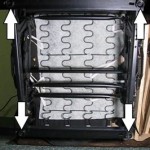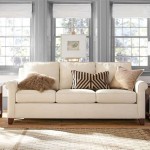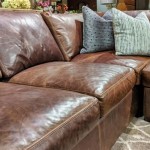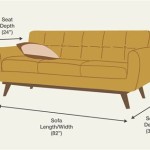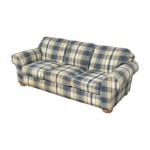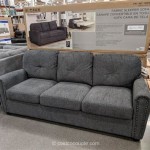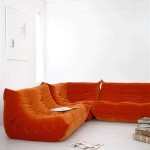The Queen Sleeper Sectional Sofa: A Comprehensive Overview
The queen sleeper sectional sofa represents a significant investment for many homeowners, offering a blend of comfortable seating, ample space for relaxation, and the added functionality of a queen-sized bed. This versatility makes it a particularly attractive option for those who frequently host guests, live in smaller spaces, or desire a multi-functional piece of furniture. Understanding the nuances of queen sleeper sectional sofas, their construction, styles, and maintenance, is crucial for making an informed purchase that aligns with individual needs and preferences.
This article aims to provide a detailed exploration of the queen sleeper sectional sofa, covering various aspects from its underlying mechanism and construction materials to style considerations and practical maintenance tips. The information presented is designed to equip potential buyers with the knowledge necessary to navigate the market effectively and select a queen sleeper sectional that meets their specific requirements in terms of comfort, durability, and aesthetic appeal.
Understanding the Mechanism and Construction
The core functionality of a queen sleeper sectional sofa lies in its internal mechanism, responsible for transforming the sofa into a comfortable queen-sized bed. Several different mechanisms are commonly used, each with its own advantages and disadvantages in terms of ease of use, durability, and comfort level of the resulting bed. A crucial aspect to consider is the ease of operation. A well-designed mechanism should allow for a smooth and effortless transition between sofa and bed configurations, minimizing the strain on the user and preventing potential damage to the sofa frame.
Beyond the mechanism, the construction materials are paramount to the sofa's overall quality and longevity. The frame, typically constructed from hardwood, engineered wood, or a combination of both, provides the structural foundation. Hardwood frames generally offer superior durability and resistance to warping, while engineered wood offers a more cost-effective alternative. The suspension system, usually consisting of springs or webbing, contributes significantly to the seating comfort. Sinuous springs, also known as no-sag springs, are a common choice, providing a balance of support and flexibility. Eight-way hand-tied springs, while more expensive, represent the gold standard in terms of comfort and durability.
The cushioning materials used in the seat cushions, back cushions, and mattress also play a critical role in the overall comfort and support provided by the queen sleeper sectional. High-density foam is a popular choice for seat cushions, offering a firm and supportive feel. Down-blend cushions provide a softer, more luxurious experience, but require more frequent maintenance to prevent flattening. The mattress, which can be either innerspring or foam, should be thick enough to provide adequate support and comfort for sleeping. Memory foam mattresses are a popular choice, conforming to the body's contours and alleviating pressure points.
Exploring Different Styles and Configurations
Queen sleeper sectional sofas are available in a wide array of styles and configurations, allowing buyers to choose a piece that seamlessly integrates with their existing décor and spatial constraints. The style encompasses the overall aesthetic of the sofa, ranging from traditional and classic designs to modern and contemporary styles. Traditional styles often feature rolled arms, button tufting, and ornate details, while modern styles tend to emphasize clean lines, minimalist silhouettes, and neutral color palettes. The choice of style is largely a matter of personal preference, but it should also complement the existing furniture and architectural style of the room.
The configuration of the sectional refers to the arrangement of the individual pieces that make up the sofa. Common configurations include L-shaped sectionals, U-shaped sectionals, and modular sectionals. L-shaped sectionals consist of two or more pieces arranged in an "L" shape, providing ample seating and a distinct corner. U-shaped sectionals offer even more seating capacity, typically consisting of three or more pieces arranged in a "U" shape. Modular sectionals are highly versatile, allowing the user to rearrange the individual pieces to create different configurations as needed.
Other style considerations include the type of upholstery fabric, the color of the fabric, and the presence of any decorative accents. Upholstery fabrics can range from natural fibers like cotton and linen to synthetic fibers like polyester and microfiber. Each type of fabric has its own unique properties in terms of durability, stain resistance, and ease of cleaning. The color of the fabric should complement the existing color scheme of the room, while decorative accents, such as throw pillows, blankets, and ottomans, can add visual interest and personality to the sofa.
Maintenance and Care for Longevity
Proper maintenance and care are essential for maximizing the lifespan of a queen sleeper sectional sofa and preserving its appearance. Regular cleaning is crucial for preventing the buildup of dirt, dust, and stains. The specific cleaning methods required will depend on the type of upholstery fabric used. For most fabrics, vacuuming regularly with an upholstery attachment is sufficient to remove loose dirt and dust. Spot cleaning is recommended for addressing spills and stains promptly, using a mild detergent and a clean cloth. Avoid using harsh chemicals or abrasive cleaners, as these can damage the fabric.
In addition to regular cleaning, it is important to protect the sofa from excessive wear and tear. Avoid placing the sofa in direct sunlight, as this can cause the fabric to fade over time. Use coasters and placemats to protect the upholstery from spills and stains. Avoid sitting on the arms or edges of the sofa, as this can damage the frame and suspension system. Regularly rotate and fluff the cushions to prevent them from becoming flattened or misshapen.
The sleeper mechanism also requires periodic maintenance to ensure smooth and reliable operation. Regularly check the hinges and joints for any signs of wear or looseness. Lubricate the mechanism with a silicone-based lubricant to prevent squeaking and sticking. When folding and unfolding the bed, follow the manufacturer's instructions carefully to avoid damaging the mechanism. If any repairs are needed, it is best to consult a professional upholstery repair service to ensure that the work is done correctly and safely.
Finally, consider professional cleaning at least once a year, especially for heavily used sofas or those with light-colored upholstery. Professional cleaners have specialized equipment and cleaning solutions that can effectively remove deep-seated dirt and stains without damaging the fabric. By following these maintenance and care tips, owners can extend the life of their queen sleeper sectional sofa and enjoy its comfort and functionality for many years to come.

Axis Reversible Queen Sleeper Sectional Sofa Reviews Crate Barrel

Customize And Personalize 146 True Sectional Fabric Sofa By Stanton Size Bed Sleepersinseattle Com

Fine Keaton Blue Two Piece Right Side Chaise Queen Sleeper Sectional

Fine Keaton Blue Two Piece Left Side Chaise Queen Sleeper Sectional

Furniture Lothan 3 Pc Leather Queen Sleeper Sectional Sofa Created For Macy S
Lane Radford Fabric Reclining Sectional With Queen Sleeper Costco

J E Home 81 9 In W Light Gray Cotton Queen Size Reversible Pull Out Sleeper 4 Seats Sectional Storage Sofa Bed Je Sf Lv7047lg The Depot

J E Home 81 9 In W Blue Cotton Queen Size 4 Seats Reversible Pull Out Sleeper Sectional Storage Sofa Bed Je Sf Lv7047bl The Depot

Mjkone Sectional Couch Futon Sofa Bed Variable Modular Oversized U L Shaped And Queen Sleeper Convertible Set For Living Room Furniture Com

Axis Leather Right Arm Queen Sleeper Sectional Sofa With Air Mattress Crate Barrel
Related Posts

